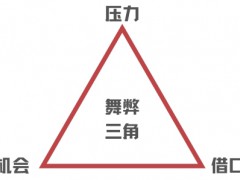据油价网4月23日消息称,英国的电池存储市场将在未来几年呈指数级增长,到本十年末将达到24吉瓦(GW)的容量。雷斯塔能源的分析显示,这些公用事业规模的电池系统将吸引高达200亿美元的投资,其综合能源储备足以为1800万户家庭提供一年的电力。由于这种快速扩张,英国将占全球装机容量的近9%,排在美国和德国之后,位居第四。
随着英国安装更多的太阳能和风能基础设施,由于这些可再生能源的间歇性,对可靠存储解决方案的需求也在增加。因此,政府制定了雄心勃勃的储能需求目标,目标是到2030年实现30吉瓦的容量,包括电池、飞轮、抽水蓄能和液态空气储能。
我们预计英国将达到甚至超过其目标,但前提是政府解决了一些预期的障碍。也就是说,确保电池系统的广泛电网连接,缓解供应链问题,并为抽水蓄能项目制定政策框架。
大规模的电池开发将很快成为英国的常态,解决了平衡短期电力需求与风能和太阳能发电间歇性的问题。这可能只是个开始。如果政府出台更多刺激投资的措施,经济可能很快就会进一步增长。
在英国4.7吉瓦的储能装机容量中,电池储能系统(BESS)仅占约2.1吉瓦。目前的大部分容量,2.8吉瓦,来自抽水蓄能——一种涡轮驱动的水力蓄能形式,水在两个不同高度的水库之间流动。尽管这些系统效率很高,但开发新产能所需的金融和监管障碍意味着英国不太可能在短期内增加新项目。然而,政府计划在2024年底之前制定一项长期储能(LDES)发展战略,如抽水蓄能,从长远来看,这将促进产能建设。
由于政府决定取消对项目规划的规模限制,电池开发不仅在数量上增长,而且在规模上也将增长。因此,英国最常见的BESS项目规模将实现飞跃,一些单个项目甚至超过1吉瓦。这种规模的电池项目可能需要多达55英亩的土地,相当于40多个足球场。
在目前的项目中,英国公司Alcemi已成为市场领导者,拥有3.3吉瓦的产能。去年,该公司与哥本哈根基础设施合作伙伴合作,在英国建设了约4吉瓦的储能项目。目前约有2吉瓦的BESS项目处于申请阶段,另有1.3吉瓦处于预申请/概念阶段。
Zenobe也是一家总部位于英国的公司,在英国的BESS项目管道中排名第二,处于不同开发阶段的项目超过1吉瓦。总部位于爱丁堡的Intergen也因其两个总计820兆瓦的大型BESS项目而跻身前五,其中包括将于今年晚些时候开始建设的Gateway项目。该项目在去年举行的容量市场拍卖中获得了一份为期15年的供电合同。
BESS可以在电网中发挥至关重要的作用,包括频率调节、电压支撑和电力储备,同时提高电网的稳定性和可靠性。为了鼓励发展,英国国家电网开辟了五个收入来源,BESS项目投资者可以从中获利。选择正确的收入来源可以为电池运营商带来可观的收入。例如,电网稳定的动态遏制服务和容量市场拍卖计划正在推动电池储能的部署。然而,满足进入此类计划的技术要求可能具有挑战性。
曹海斌 摘译自 油价网
原文如下:
UK To See Rapid Expansion In Battery Storage Through 2030
The UK’s battery storage market is set for exponential growth in the coming years, rising from the ground up to reach 24 gigawatts (GW) capacity by the end of the decade. These utility-scale battery systems will attract investments of up to $20 billion and have enough combined energy reserves to power 18 million homes for a year, Rystad Energy analysis shows. Thanks to this rapid expansion, the UK will account for almost 9% of all global capacity installations, sitting fourth in the table, the US and Germany.
As the UK installs more solar and wind energy infrastructure, the need for reliable storage solutions increases due to the intermittent nature of these renewable sources. Consequently, the government has set ambitious energy storage requirement targets, eyeing 30 GW of capacity by 2030, including batteries, flywheel, pumped hydro and liquid air energy storage.
We project that the UK will meet and even surpass its target, but only if the government addresses some expected roadblocks. Namely, ensuring widespread grid connections for battery systems, mitigating supply chain issues and developing a policy framework for pumped hydro projects.
Large-scale battery developments will soon be the norm in the UK, solving the problem of balancing short-term power demand with the intermittency of wind and solar generation. And this could just be the start. Further growth could soon be on the way if the government introduces additional incentives to spur investments.
Of the 4.7 GW of installed energy storage capacity in the UK, battery energy storage systems (BESS) account for only about 2.1 GW. Most of the current capacity, 2.8 GW, comes from pumped hydro storage – a form of turbine-powered hydroelectric storage where water moves between two reservoirs at different heights. Although these systems are efficient, the financial and regulatory hurdles required to develop new capacity mean the UK is unlikely to add new projects in the short term. However, the government plans to establish a strategy for long-duration energy storage (LDES) developments, such as pumped hydro, by the end of 2024, boosting capacity buildout in the long term.
Battery developments are not only set to grow in number but also in scale thanks to the government’s decision to lift size restrictions on project planning. As a result, the most common size of BESS projects in the UK is set to leap, with some single projects even topping 1 GW. A battery project of this scale could require as much as 55 acres of land, equivalent to more than 40 football fields.
In the current pipeline of projects, UK company Alcemi has emerged as the market leader with 3.3 GW of capacity in the pipeline. Last year, the company partnered with Copenhagen Infrastructure Partners to build around 4 GW of energy storage projects in the UK. Around 2 GW of its BESS projects are currently at the application stage, and another 1.3 GW are under the pre-application/concept stage.
Zenobe, also a UK-based company, takes second place in the UK’s BESS project pipeline with over 1 GW of projects under different stages of development. Intergen, based in Edinburgh, is also in the top five thanks to its two large-scale BESS projects totaling 820 MW, including the Gateway project that will begin construction later this year. The project secured a 15-year contract to deliver power under the capacity market auction held last year.
BESS can play an essential role in the power grid, including frequency regulation, voltage support and power reserve, while enhancing grid stability and reliability. To encourage developments, the National Grid opened five revenue streams on which BESS project investors can capitalize. Choosing the right revenue stream can deliver significant revenues to battery operators. For instance, the dynamic containment services for grid stability and the capacity market auction schemes are driving the battery energy storage deployment. However, meeting the technical requirements to enter such schemes can be challenging.
免责声明:本网转载自其它媒体的文章及图片,目的在于弘扬石化精神,传递更多石化信息,宣传国家石化产业政策,展示国家石化产业形象,参与国际石化产业舆论竞争,提高国际石化产业话语权,并不代表本网赞同其观点和对其真实性负责,在此我们谨向原作者和原媒体致以崇高敬意。如果您认为本站文章及图片侵犯了您的版权,请与我们联系,我们将第一时间删除。







